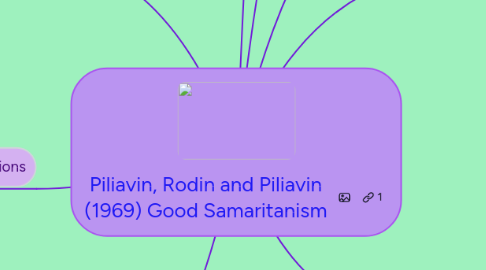Piliavin, Rodin and Piliavin (1969) Good Samaritanism
作者:Lindsay Round


1. Results
1.1. Compared to lab
1.2. Gender
1.3. Spontaneous help
1.3.1. Drunk
1.3.2. Cane
1.4. In under 70 seconds
1.4.1. Drunk
1.4.2. cane
1.5. Number of helpers
1.6. Race
1.6.1. Cane
1.6.2. Drunk
1.6.3. Number of helpers
1.7. Modelling
1.7.1. Early intervention
1.7.2. But so much spontaneous helping
1.8. Number of riders
1.9. Other observations
2. Conclusions
2.1. Individual vs situational
2.1.1. Individual
2.1.2. Sitautional
3. Evaluation
3.1. Ecological validity
3.2. Ecological validity
3.3. Generalisability
3.4. Generalisability
3.5. Reliability
3.6. Reliability
3.7. Demand characteristics
3.8. Ethics
3.9. Usefulness
4. Context
4.1. Bystander behaviour
4.2. Kitty Genovese murder
4.3. Darley and Latane
4.4. Latane and Rodin
4.5. Bryan and Test
4.6. Previous research
4.7. Diffusion of responsibility (Latane and Darley)
5. Variables
5.1. IVs
5.2. DVs
6. Field experiment
6.1. Aims
6.2. Hypotheses
6.2.1. Race
6.2.2. Cane vs Drunk
6.2.3. Group size
6.3. Setting
6.3.1. Why?
7. Subjects
7.1. Sample
7.2. Unaware in a study
7.3. Mean per car
7.4. Mean in critical area
8. Procedure
8.1. Situation
8.2. Teams
8.2.1. Number
8.2.2. trials
8.2.3. Observers
8.2.3.1. 1.
8.2.3.2. 2.
8.2.3.3. Both
8.2.4. Model
8.2.4.1. Conditions
8.2.4.1.1. Number
8.2.4.2. Action
8.2.5. Victim
8.2.5.1. Conditions
8.2.5.2. Action
